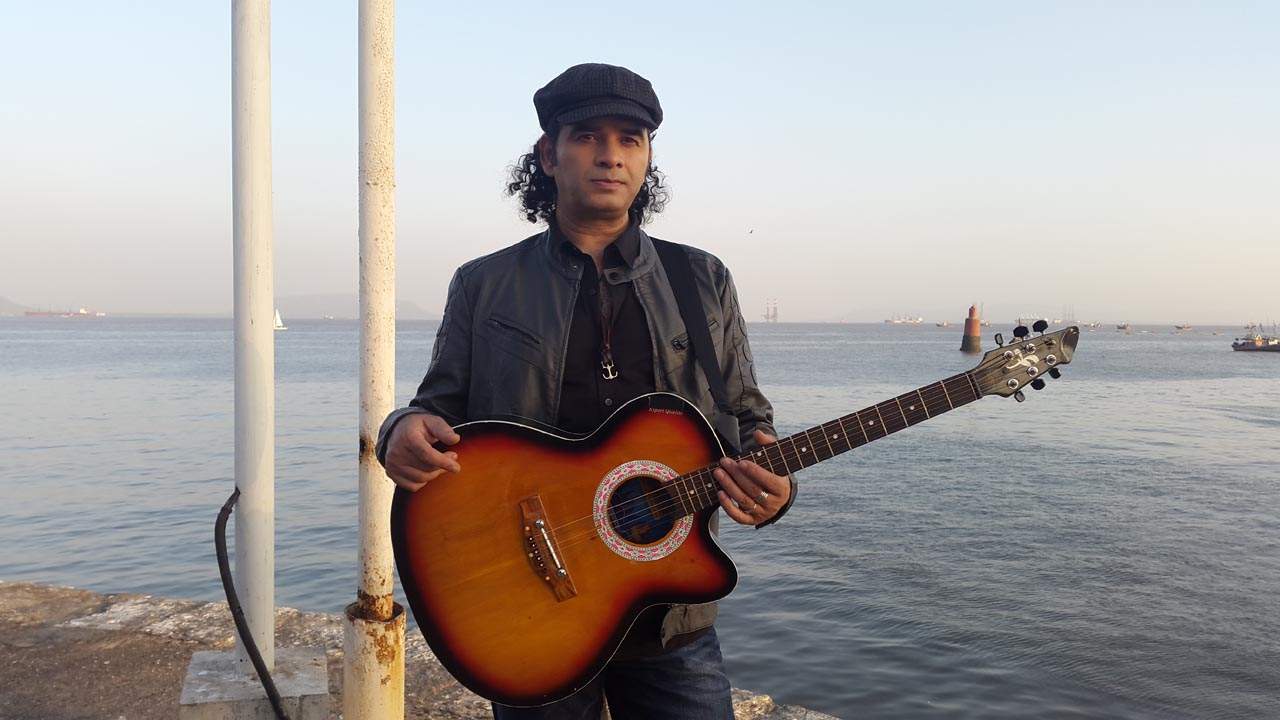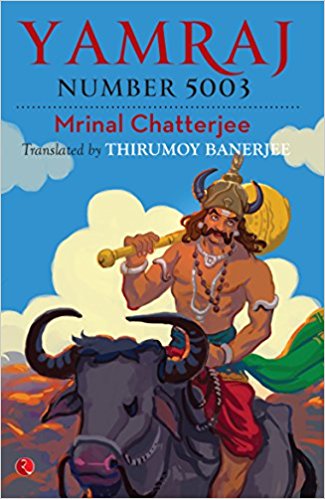
Ranjith was all behind the scenes. He texted several people, to remind them of the time, 8 pm. Some of them were still at office and some relaxing back home. When the clock struck eight, he pressed his thumb against the ‘record’ button in WhatsApp and recited his poem aloud, while enjoying the cool breeze in his balcony. There started a poetry venue where a hundred people took part, some of them presenting their poems and others discussing them. “Ezhuthocha”, a WhatsApp group, turned into a platform for the first virtual poetry venue, on 27th of June, this year. Presentations and discussions happened all through voice clips, making the participants feel each others’ presence, thus breaking all physicality; a group of people living in different parts of the world, shared their poetic expressions in the same venue, while still staying in their comfort zones.
For an art to survive the dynamicity of media through the ages, the reasons maybe two – first, the demand for the art be high that people accept its form regardless of the media it reaches them through. Second, artists try finding novel ways to adapt the art form to the changing media tools. Reasons be any, the fact that Malayalam poetry survived through ages, adapting itself to the changing media tools by altering its size, form and subjects it discuss, is unquestioned. There have been myriad visual manifestations for verses in the land of Kathakali. That incredible link between verse and audiovisual media can be traced all along the paths of Thullal, Koodiyattam and other dance dramas. The world of literature here regarded 1990s as the period of loud poetry. Embracing wide possibilities of sound, poetry grew as recitals, shouts, and sometimes as screams. It flourished in its passage through mouths and ears. This blend the art form developed with sound and rhythm should be observed to have developed with many other tools of art in later years.
If this adds up to the larger idea of art media convergence, the association it developed with sculpture in 2015 is to be regarded a milestone. Kochi witnessed the ever first poetry installation of its fashion in the last week of June. Binding much volatile an art into the concreteness of sculpture can sound like carpe diem; but it marks a novel platform where the images in poems turn entities, perceived even by those who fail to appreciate poetry. “Poetry installation was all about opting another strong medium to express the micro politics our poems carry.” – says S. Kalesh, one of the masterminds of the show. “Sculptures were designed taking poet’s ideas into concern. We recorded the poems in our own voice and played it from within the installations”– he adds. A week long exhibition had two installations, based on the poems ‘Sabda Mahasamudram’ (Ocean of voice) and ‘Desheeya Mrugam’ (National Animal) of S. Kalesh and Ajeesh Dasan respectively. But as a poem develops new links with changing times which makes it eternal, the installations get out dated, characterized with its permanence of shape, unlike poetry. Thus the convergence of poetry with is installation is time bound, and it demands updated sculptures as the time moves on.
It is in this regard, the attempts of Ayyappan Moolasseril on ‘Poetography’ are seen as efforts of online installation of poetry. “A website to make use of the cyber possibilities of poetry, Poetography presents each poem as a combination of its recital, related sketches and the text. English translation of the poem will be provided along with similar attributes.” – says Ayyappan, an eighteen year old. “Sketches will be prepared by fine art bachelors and audio counterpart by social media kiths. Both the poem and its translation will be accompanied by the comments of established poets of the language, on the work of art. Site will also carry a short biography of the poet and links to his/her social media profiles” – he adds.
This mutation Malayalam poetry is being subjected to, can be noticed to have started in 2005 – with the advent of Poetry blogs. Poetry migrated to the cyber space, establishing itself as a strong subtext which catered to numerous discussions and later consensus. Poetry blospheres took birth and there evolved an active poetic society online. Kuzhur Wilson, one of the first poets to start an exclusive poetry blog in Malayalam, wishes to see this as a universal change which poetry didn’t fail to reflect. “All art forms and walks of life upheld the desire for cyber migration. What distinguishes the evolution f poetry in this line was its massive democratization. In a decade from there, poetry became everybody’s form of expression.” – He says – “Ten years is never a span of time to analyse the mutation. But watching it as a slow advancement, poetry can be seen as reaching the grassroots, employing newer means and tools of art for the purpose.”
‘Ezhuthocha’ (literary voice), the WhatsApp poetic group, is planning its second virtual poetry venue on July 8. Ranjith, one of its key organizers, conceived the idea seeing a local group of youngsters in Kodungalloor, a village of Kerala, with adamant political views and exotic poetic expressions. In his venture to extend the company to similar people staying geographically far, ‘Ezhuthocha’ was born, initially with three members. “I posted the possibilities of such a group on Facebook, along with the details of poetry discussions happening there. Several people commented their mobile numbers with the interest of joining us. Now readers outnumber poets. The group is a perfect place of poetic harmony now.” – He says. Several established poets like Satchithanandan and Rafeeq Ahmed had been a part of this group. It gave a pure platform for the senior poets to perform and the juniors to capture the arena. Amidst the busiest of his work schedule, Saji Pariyaram turned around and drummed on his table, some folk beats with his hand. In the conventional tribal rhythm, he sang – “…While our black Gods get murdered by the Gods of the ruling, will they ever hesitate to kill us away too? Can’t resist singing my love… Sing! Be it to die of a busted throat…”
Listeners were never aware of his corporate job Saji pursued after the recital but were taken to a subaltern tribal village which still has that persistent agony to sing about. What else do they call a perfect case of omnipresence?
An overflow of layman’s poetry was the outcome of Malayalam poetry’s cyber migration. With more than five thousand organized cyber poets, the crisis regarding centralized storage of the immense poetry wealth was addressed by certain language forums and free websites; ‘Punchappaadam’ being an eminent one. ‘Punchappaadam’ is a poetry database which encourages e-reading through categorized storage of poems, lyrics and other pieces of literary art. It showcases both the works of renowned poets and those distinctive ones from the beginners. The website offers a smooth traversal through ages of Malayalam literature, furnishing the old and new under separately accessible tabs. In an age when anthologies are available as graphic books and audio books, the promotion of a poetry collection through a video trailer is nothing to be wondered at. “Vinda paadiloode thirike po venale…” (Go back through the scars of cracks, you summer), an anthology of poems from three young poets – Ranjith Kannankaattil, Ayyappan Moolasseril and Smithin Sundar – was introduced through the words of K. Satchithanandan, announced in the beginning of the three minute long video. The trailer showed the poets and an intro to their anthology. Yes – poetry has indeed found newer means to reach people.
Anil Sethumadhavan, a higher secondary student is behind the Facebook page ‘Kalapila’ which has a reach to more than 67,000 people. What make ‘Kalapila’ special, are the selective thematic images imposed with capsuled poetry it propagates. The culture of short poetry began to rule the cyber space with the emergence of social networking sites, where a reader sets finger on the scroll button all along the browse. Poetry here needs to captivate the reader at the first glance and shoot itself deep into his conscience in the very next moment. Haikus and micro haikus gained mileage in this age where poetic expressions are super precise, sharp and capsuled. The Malayalam calligraphy venture named ‘Malayaligraphy’ (magra) is worth mention in this concern. Through pictorial depictions of hearty strands from famous poems, ‘Magra’ bound poetry with nostalgia. They successfully experimented it with famous movie dialogues and popular comics too.
All along its cyber path, poetry can be seen to have catering a target group of audience. Employment of each media tool intrinsically defines a particular mass which the poem intends to cater. Specifically speaking, from the age when readers sought poetry for catharsis, poetry has started seeking readers, converging with distinctive art media. The association of cyber poets has resulted in published anthologies, most of the poets meeting for first on the date of release. The possibilities of self publishing are major advancements in this field. Websites like Blurb.com run services where the writers can submit their works and receive e-book versions of their works. They can later present their e books in online store and receive their profit of sale in their bank accounts. Thus, eliminating a ‘publisher layer’ made book publishing everybody’s cup of coffee.
The vast world out in the West set the model for hyperlinked poetry. Catchy hyperlinked lines leading you to the full text or the audio visual manifestation of the poem had trended Indian social media way back in previous years. “Every work of art must radiate poetic energy” – said renowned sculptor Kanayi Kunjiraman as reported by The Hindu – “otherwise it will not touch the heart of a connoisseur.” Poetry can be well discerned in today’s paintings and sculptures. If a form of art spreads its roots deep into other forms and stand the winds of time embracing technology and tools of communication, the sheer harmony the language maintains with its users can be expressed as nothing but “POETIC”. A decade after Malayalam poetry migrated into the web, it is incredible a fact to be acknowledged that it left out no single technical nuance to bond with people.
Quotes
· “Short poems imposed on thematic pictures got popular as images on Facebook. This was inevitable to cater the ever changing features of cyber readability.” – Ayyapan Moolasseril, Poet.
· “Poetry installation was all about opting another strong medium to express the micro politics our poems carry. Poetry indeed carry that politics of survival” – Kalesh Som, Poet, Journalist.
· “When most other art forms reflect the survival of a community through crises, poetry is centralized on the poet. It is one man’s voice. Like food or water, it should be achievable by all. Internet democratized poetry” – Kuzhur Wilson, Poet.
· “A healthy communication between poets and artists of other domains like sculpture, painting, music or dance prevailed in our society in past centuries. This perished in a recent age and social media helped reviving this friendship and association.” – Krispin Joseph, Poet.




